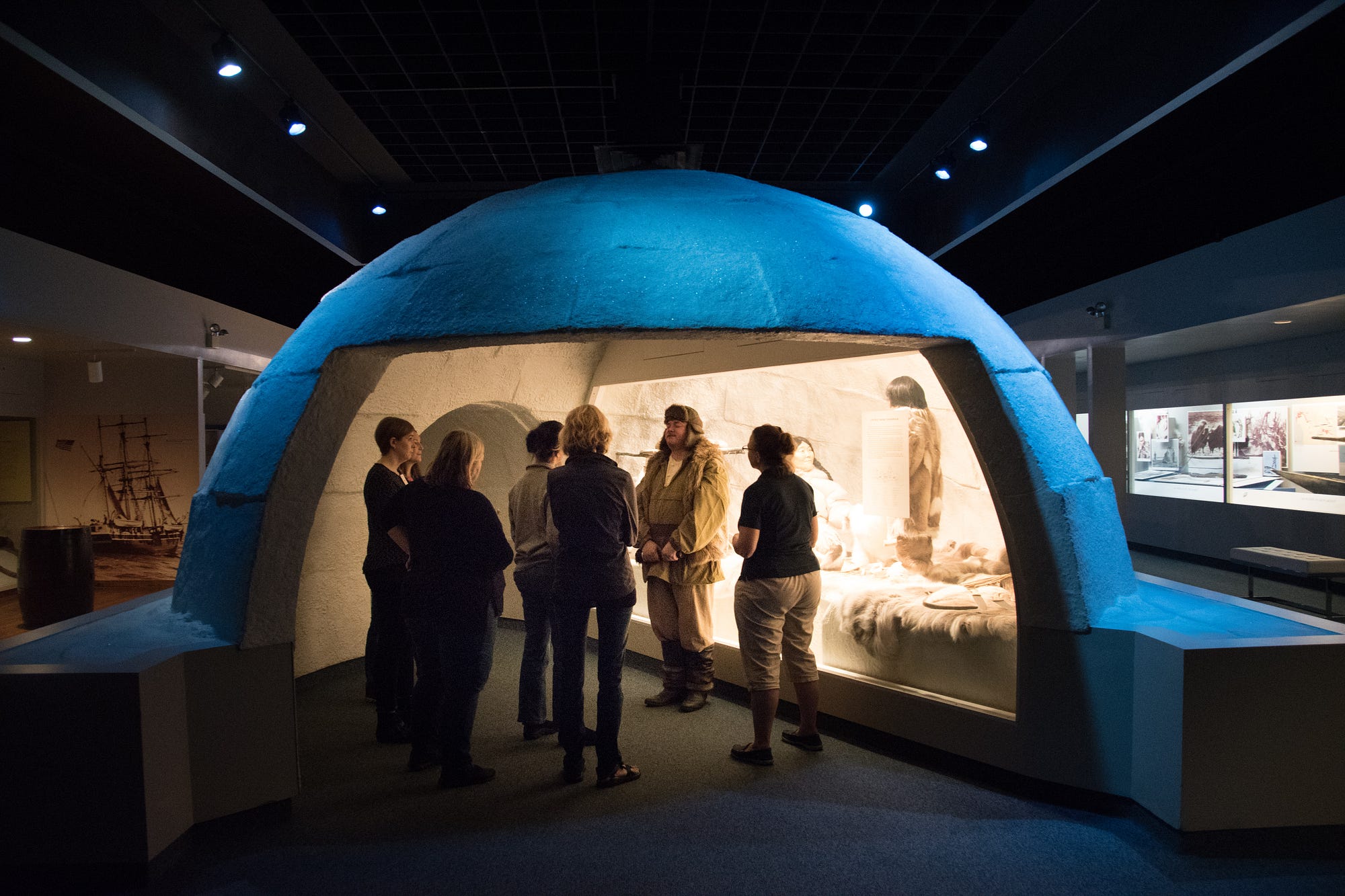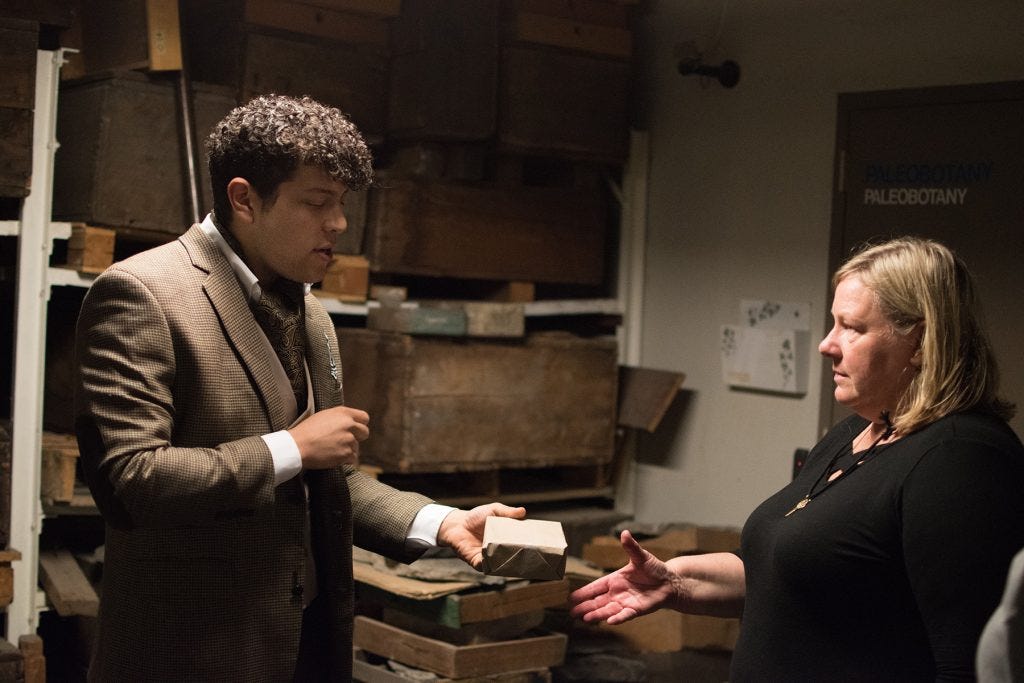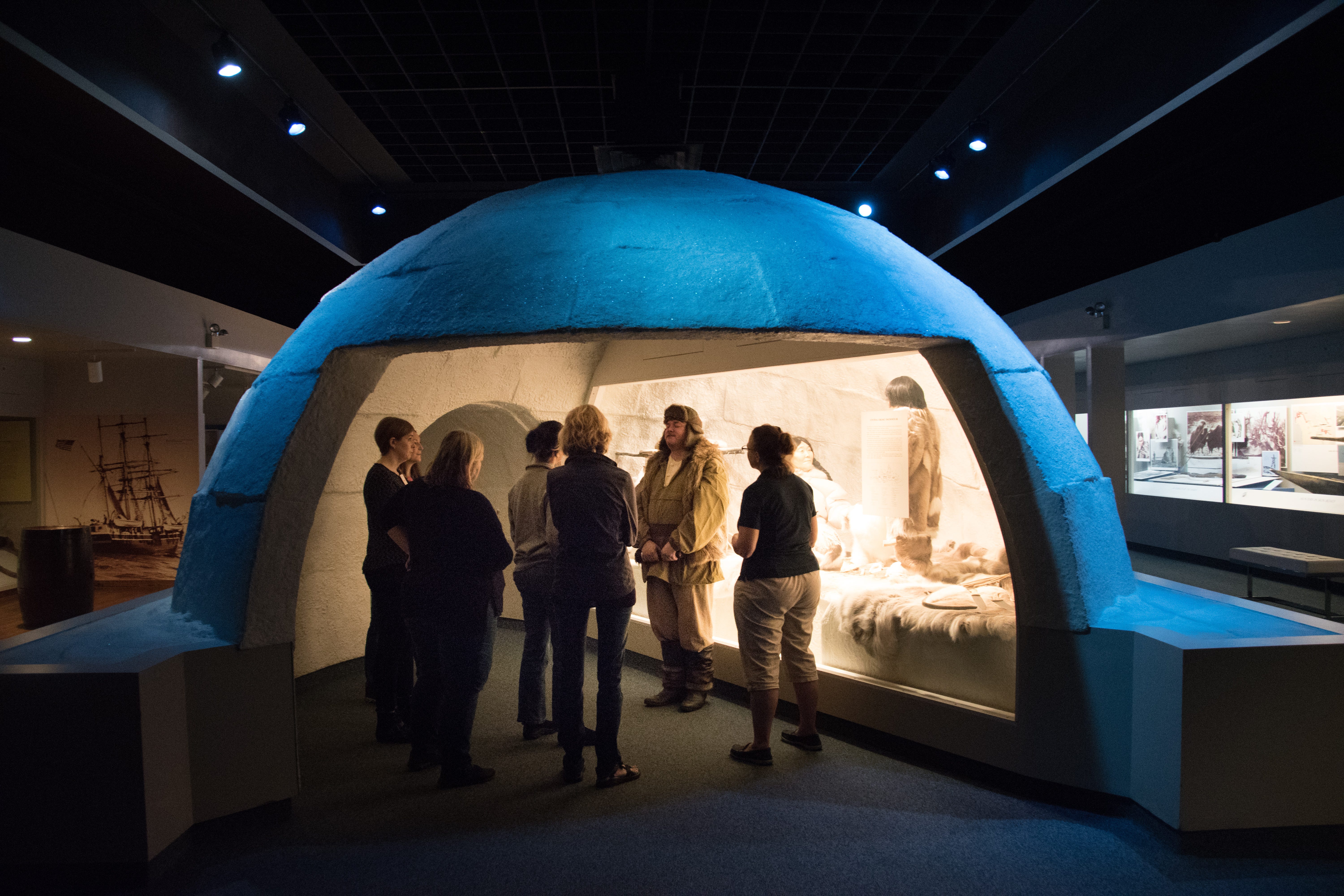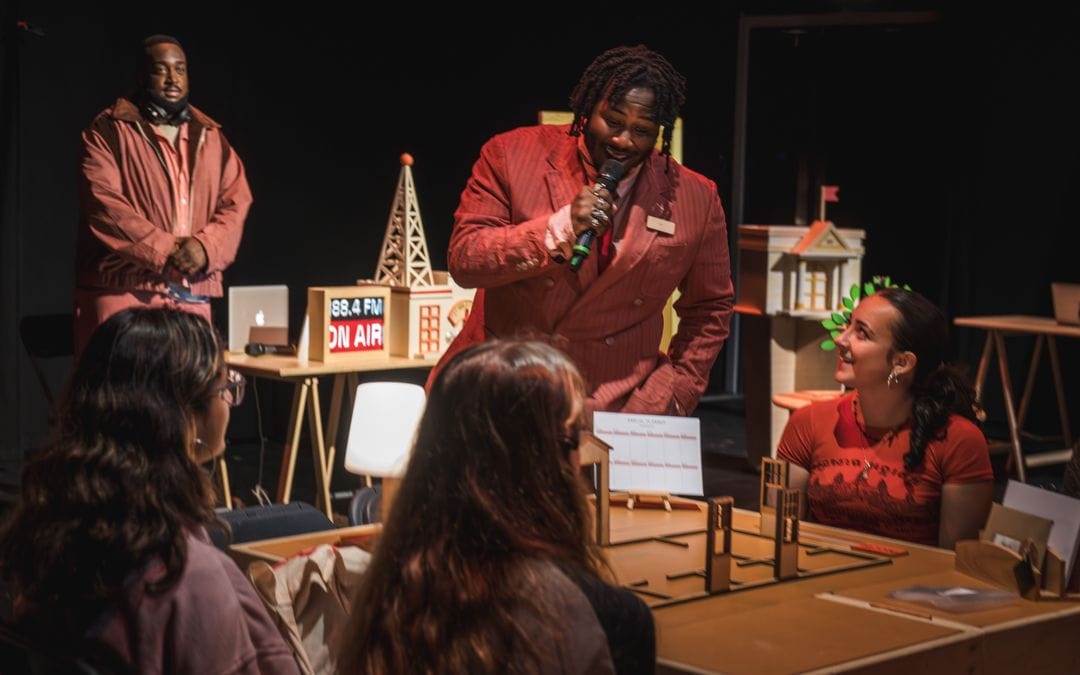
An interview with Fred Frances, Jackie Baker, and Tami Dixon
Pittsburgh’s Bricolage Production Company has long been a stalwart of the US immersive scene. You may have heard of their critically-acclaimed experiences like STRATA, OjO, DODO, and the recent The Forest of Everywhere; in recent years, they’ve also worked hard on expanding their accessibility programs by adding Braille programs, audio description, ASL Interpretation, and launching their Immersive Companions program. Recently, they have announced a new initiative for 2019 called Free For All where patrons can view performances of Bricolage shows for free, no strings attached.
We spoke to Bricolage’s Audience and Box Office Manager Fred Frances, Managing Director Jackie Baker, and Principal Creative & Co-Founder Tami Dixon over email to learn more about immersive theatre and accessibility.
No Proscenium (NP): Can you tell us a little about yourself and what you do at Bricolage?
Fred Frances (FF): I’m Fred, the Audience & Box Office Manager. I work on ticketing and front of house, and coordinate our volunteers and accessibility programs. If you come to a show at Bricolage, odds are that I sold you the ticket and I’ll be the one to greet you and make sure you’re comfortable when you get to the show.
Tami Dixon (TD): I am the Principal Creative and Co-Founder. I initiate programming, design immersive experiences, curate storytelling and serve on the board’s Inclusion and Accessibility Committee.
Jackie Baker (JB): I’m Jackie, the Managing Director. I do a little bit of everything day-to-day, but the biggest tasks are managing the finances, organizational systems, processes, communications, and strategic planning. It’s my job to make sure we have the things we need to do what we want to do.
NP: How have you and the Bricolage team been working to make all of your experiences more accessible?
JB: Some of the first things that happened when I landed at Bricolage in 2014 were that we opened OjO, and I attended the Leadership Exchange in Arts and Disabilities Conference for the first time. Those two experiences happened very close to each other and it was an interesting juxtaposition. We were presenting highly personalized experiences for audience members and working together with artists who were blind to create a piece from the ground up, but didn’t yet have a few basic accommodations like audio description or ASL interpretation available for our more traditional programs.
Over the next few years, we began adding those accommodations and established an Inclusion and Access Committee at the board level. At a certain point, we ran up against the reality that traditional solutions can’t easily be applied to nontraditional theater works like our immersives, particularly when they are journey-based sensory experiences like OjO was. That’s what led us to start initiatives like the Immersive Companions program and to begin building with inclusive design in mind. We’re a small and agile company whose mission drives toward personal experiences, so getting buy-in from the entire team wasn’t hard (though mistakes and learning opportunities are never-ending!)
Because it matters to us all and is on-mission, we’re able to work together to create entirely new solutions, and can now approach an access need as an opportunity to innovate if a traditional solution doesn’t already exist.

NP: Can you tell us a little bit about the Immersive Companions Program? How does it work?
FF: The Immersive Companions program was designed to remove barriers for patrons during our immersive experiences, which are heavy on travel and sensory input. We begin by doing our best to lay out the physical and sensory demands of a show without giving anything away, and invite the audience to reach out or fill out a text box on the ticketing page if they have any concerns. After speaking with the patron, sometimes I find that their need can be met by making a custom adjustment to their journey through the show, which I then work with the creative team to implement. If, however, they have a need that would be best met by having another person in the experience with them that’s dedicated to helping them feel comfortable, then I assign them an Immersive Companion.
Immersive Companions travel with the guest inside the experience and can provide traditional access services, like ASL Interpretation, or more out-of-the-box accommodations, like warning a guest with sensory sensitivities before an intense sensory experience begins. The goal is to give each audience member as much independence and agency as they prefer and to only be present for assistance when necessary.
We specially train our Immersive Companions on each new show, and cultivate a large pool that includes as many accessibility experts (like ASL Interpreters and audio describers) as possible, so that we can offer our guests maximum flexibility in choosing their performance, no matter what kind of accessibility support they need. We match guests with their Immersive Companions as early as possible, so that they can communicate about the guest’s needs and preferences before the show ever begins.
NP: For 2019, you’re starting an initiative you’re calling Theater for All. What will this program be about?
JB: Theater for All is a response to the reality that sometimes the barrier to access is financial. In the past we’ve addressed this by offering Pay-What-You-Want performances at Midnight Radio, extending various discounts throughout the year, and making test previews of our immersives free. While we aren’t getting rid of those, we know they aren’t enough. Pay-What-You-Want still has the word “Pay” in it, and an initiative that offers only one performance to choose from isn’t much of a choice at all.
Theater for All Works like this: for every show, we’ll announce one “Free for All” — a day and time when anyone can get up to two tickets for free. When the Free for all begins, we’ll announce a discount code that lets anybody get two free tickets online to any performance of that show. At the same time, free tickets also become available over the phone and in the lobby of our theater. When the tickets are gone, they’re gone…until the next Free for All for the next show.
NP: What are some of the challenges you have encountered along the way in implementing these programs?
Get Kathryn Yu’s stories in your inbox
Join Medium for free to get updates from this writer.
SubscribeSubscribe
FF: The hardest thing about working in accessibility at Bricolage is that our view of accessibility is so broad, that we sometimes have to convince people that something they’ve lived with for a long time is, in fact, an accessibility need! Through the Immersive Companions program and other access initiatives, we’ve tried to remove barriers far beyond what is considered “normal” access work, including abstract ideas like loneliness. Helping new guests understand that they can share any concerns they have with us and we’ll do everything we can to help, even the concerns they don’t think we’ll care about — that’s the tough part.
TD: When you view your audience as individuals (instead of a monolith) a one-size-fits-all approach to accessibility becomes problematic.
For instance, having a Braille map is great, but what if one of your blind patrons doesn’t read Braille? Or, it’s great that your experience doesn’t include stairs, but what if your bathrooms can’t accommodate a wheelchair?
Connecting with an audience of individuals takes time, requires someone dedicated to keeping up the communication, and insists that the creative team and administration remain flexible. This can be challenging, especially for smaller companies. The good news is we are not striving for perfection, but progress. Being transparent about what you are able to do can go a long way. Asking how you can do better next time will also strengthen your relationships with people who utilize accommodations. While these challenges serve to awaken us and help us unlearn conscious and unconscious patterns of exclusion, we take comfort that this is not a race to a finish line, but instead is the carving out of an ever-wider doorway.
NP: Making an immersive theatre experience accessible is not very common yet. Why do you think that is?
TD: It’s easier to do what has always been done, and harder to think beyond what is typical. Maybe the people in creative positions of power don’t think about accessibility because they typically don’t utilize accommodations and are unconsciously creating experiences for people who are like themselves. Singular perspectives are limiting and often exclusionary. Building new relationships takes time and building trust takes even longer, but it’s important that we honor this work with our time and attention.
It’s helpful to begin thinking about inclusion as an inspiration, not a limitation.
JB: I often hear folks say that no one who needs the supports they’re being urged to implement actually comes to their shows. I think it can be hard for folks to break out of that perspective and realize that until they offer those supports, no one who needs them can come.

NP: What are some benefits of better accessibility that you didn’t anticipate would occur beforehand?
TD: Only after receiving long, lovely, and sometimes critical emails from our patrons did we begin to realize how deeply accommodations matter and how often they are overlooked. How changing our single stall bathroom signs to read “All Gender” can make someone feel safe and seen. How creating a dedicated space for a service animal to sit can relieve anxiety. How educating our performers about sensory sensitivities can make connecting with a patron more meaningful. How having a designated team member wait with a patron at the end of the night for their Access bus to arrive can make them feel like family. We make a point to not build accommodations in a vacuum. We celebrate transparency and because we have an open dialogue with our patrons we are free to ask for candid feedback about their experience.
We have found that people are not seeking perfection, and they appreciate our willingness to be honest about what we don’t know. We have learned not to be afraid of failure in this work, on the contrary our progress depends on it.
NP: What’s the audience response been like so far to these initiatives?
FF: These programs are rewarding to implement because the impact on our guests is so great and immediate. The personalized, careful nature of the programs brings me and our guests much closer together, and, by extension, makes them feel more a part of the Bricolage family. When someone who’s new to Bricolage gets set up with an Immersive Companion, they go through a process in which they meet at least two people (the Companion and myself) whose top priority is their comfort and happiness. How rarely does that happen in our regular lives?
We eagerly solicit and incorporate feedback about how we can improve on these programs, but most people who use our access services are floored at just how much we really care that they feel comfortable and included in what’s happening here.
NP: What advice would you give to immersive theatre creators who want to start making their work more accessible? What’s a good place to start?
TD: Look at what you already have. Begin there. Start the accessibility conversation before the experience is created, before tickets go on sale, before a patron arrives at your door. Include the creative team, the administration and leadership in all accessibility conversations. This is not a one department deal, accessibility affects every aspect of your organization.
The main thing is to reach out for help. Do not suffer from the illusion that you can do this work alone. People are more than willing to help if asked. ASK MORE QUESTIONS.
JB: Don’t be afraid to fail. Do your best, ask the folks you’re trying to serve whether you’ve served them well. Try again. Repeat.
Learn more about Bricolage and their accessibility programs.
NoPro is a labor of love made possible by our generous Patreon backers. Join them today!
In addition to the No Proscenium web site, our podcast, and our newsletters, you can find NoPro on Twitter, Facebook, YouTube, Instagram, in the Facebook community Everything Immersive, and on our Slack forum.
Office facilities provided by Thymele Arts, in Los Angeles, CA.




















Discussion